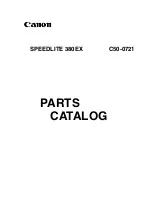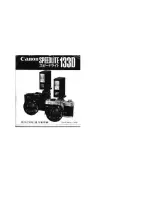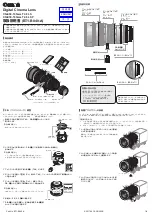
Check out the detailed appendix in
the electronic users manual for a
chart of acceptable lenses, partic-
ularly before mounting older lenses.
Powering the camera
The Kodak Professional DCS 760
relies on a proprietary 7.2-volt
rechargeable battery, NiCad or
NiMH, reportedly good for 100 and
300 exposures, respectively. In my
tests, the NiMH version performed
quite well. The battery also
provides power to charge a small
battery that maintains the camera’s
preferences. If this battery
discharges, such information as the
nameplate, date, and time have to
be reentered. The manual notes
that if a battery is left in the camera
for five or more days, it can
discharge to the point of being
useless or it can leak and damage
the camera. As with all battery-
powered devices, it’s good practice
to remove and recharge the battery
at the end of each session.
The DCS 760 ships with an
external AC adapter, as well a dual
battery charger with a built-in
reconditioning function. These
units run on 120 -240 volts and
come with cords for most power
systems. In Kenya, a supplied cord
worked in the local outlets—when
we had power. During the safari, I
used two portable solar panels to
keep the camera batteries and
PowerBook charged. Other members
of the safari used the cigarette
lighter plugs in the two Land Cruisers
for their video camera batteries.
Storing and viewing images
The DCS 760 has two bays that
can accommodate Type I, II, and III
PCMCIA-ATA compatible flash
memory and microdrives in PC card
adaptors. I used two cards each with
1GB IBM microdrives. This config-
uration allows shooting 234 images
without downloading. The truly great
feature of the two card bays is that
one can be removed for downloading
without powering down the camera.
An icon on the lower LCD flashes
when the data is being written to
the card. When it is solid, it is safe
to remove either card.
The DCS 760 offers simple file
management that is accessed with
the menu button on the back of the
camera. The LCD monitor displays
the folder names available on both
cards. The four-way rocker switch
navigates to the folder and pressing
OK on the camera back makes the
choice and turns the monitor off.
Images can be deleted individually,
as untagged, or as a folder. One of
the camera’s inspired features is the
ability to recover deleted images
from a card. This feature works as
long as the image data has not been
overwritten. It’s like being able to
recover the exposures lost when
you realize that the film hasn’t
gone through the camera.
Photographs can be reviewed on
the LCD monitor on the back of the
camera. Pressing OK accesses the
last stored image and the four way
rocker switch navigates forward and
backward. The up and down
positions bring up options that
include a histogram, a zoom tool
for checking sharpness, a four-
thumbnail view, and a delete image
window. It is possible to shoot
while in the playback mode, but
the four-way rocker will not
change the focus zone while the
LCD monitor is on. This is true
when the nameplate is displayed
when turning the camera on, which
is not covered in the manual.
Firmware & menus
The firmware that is installed in
the camera provides the menus and
other operational functions of the
44
• PEI • NOVEMBER 2001
A young lion watches in the Maasai Mara. Handheld with sandbag,
1
⁄
160
second at f/5.6,
ISO 250 (Nikkor 80-200mm f/2.8 D AF-S lens with a Nikon 2X Teleconverter).























